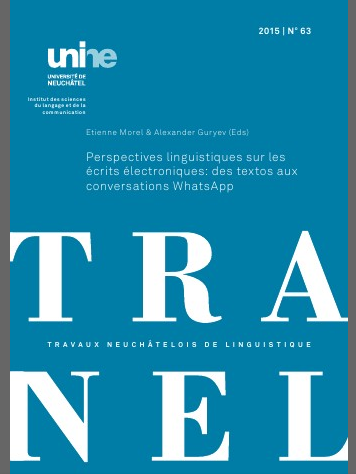Analyse d'un corpus longitudinal de SMS produits par de jeunes adolescents
DOI:
https://doi.org/10.26034/tranel.2015.2967Abstract
In this paper, our hypothesis is that the SMS register of the written language shares certain features with the spoken language. One of them – the way it is being acquired – will be at the center of this study. In contrast to traditional writing, the SMS register is not the result of explicit academic instruction. It is acquired through daily life activities and interactions, just as spoken language is, although at a later stage in time. To examine this question, we collected a longitudinal corpus of natural SMS data (2009-2010), with the collaboration of a junior high school in the region of Poitou-Charentes (France). Data collection took place over the course of one school year (each month) among youngsters between the ages of 11 and 13 years who had no previous experience using a cell phone (a total of 4,524 SMS messages has been collected). These text messages were analyzed using two kinds of indices: a) orthographic indices (categories of spelling errors) and b) dialogic indices (presence/absence of openings or closings). The data are discussed in terms of the specificities of the SMS register as compared to other large registers (traditional spoken, traditional written language).Downloads
Published
2015-01-01
How to Cite
Bernicot, J., Bert-Erboul, A., Goumi, A., & Volkaert-Legrier, O. (2015). Analyse d’un corpus longitudinal de SMS produits par de jeunes adolescents. TRANEL, (63), 15–29. https://doi.org/10.26034/tranel.2015.2967
Issue
Section
Article thématique


